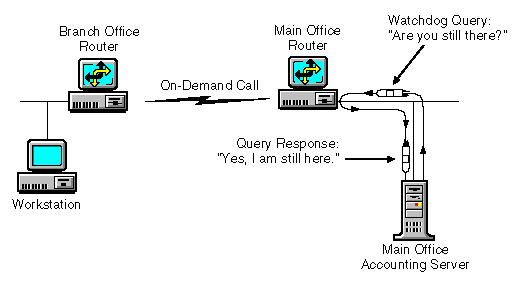

  |
NetWare servers use the Watchdog protocol to validate workstation connections periodically. When a workstation is logged in to a server but has not transmitted a packet for some period of time (the default is 5 minutes), the server sends a watchdog query packet to the workstation. If the workstation does not reply with a watchdog response packet after 5 minutes, the server sends additional queries at specified intervals until 15 minutes have elapsed. If the workstation still has not replied, the server terminates the connection.
With several workstations operating over an on-demand call, the exchange of watchdog packets can keep the connection active most of the time. Depending on the telecommunications carrier you use for the connection, this can become expensive.
You can avoid this problem by configuring your router to perform watchdog spoofing . This means that the router captures watchdog query packets on their way to a workstation and responds on behalf of the workstation without activating the on-demand call. Because of the spoofing, however, the workstation's server connection remains occupied unless it logs out. A way to avoid this is for the remote server to execute a forced logout of all workstations at a predetermined time (midnight, for example), so that all server connections are freed for the next day.
Figure 4 shows how watchdog spoofing works over an on-demand call.
Figure 4
Watchdog Spoofing Enabled over an On-Demand Call
When watchdog spoofing is enabled on an on-demand call, watchdog packets, going from a server to a client, cause the router to reply that the workstation is active without initiating the call. If watchdog spoofing is disabled, an on-demand call is initiated for each watchdog packet that crosses the connection.
  |